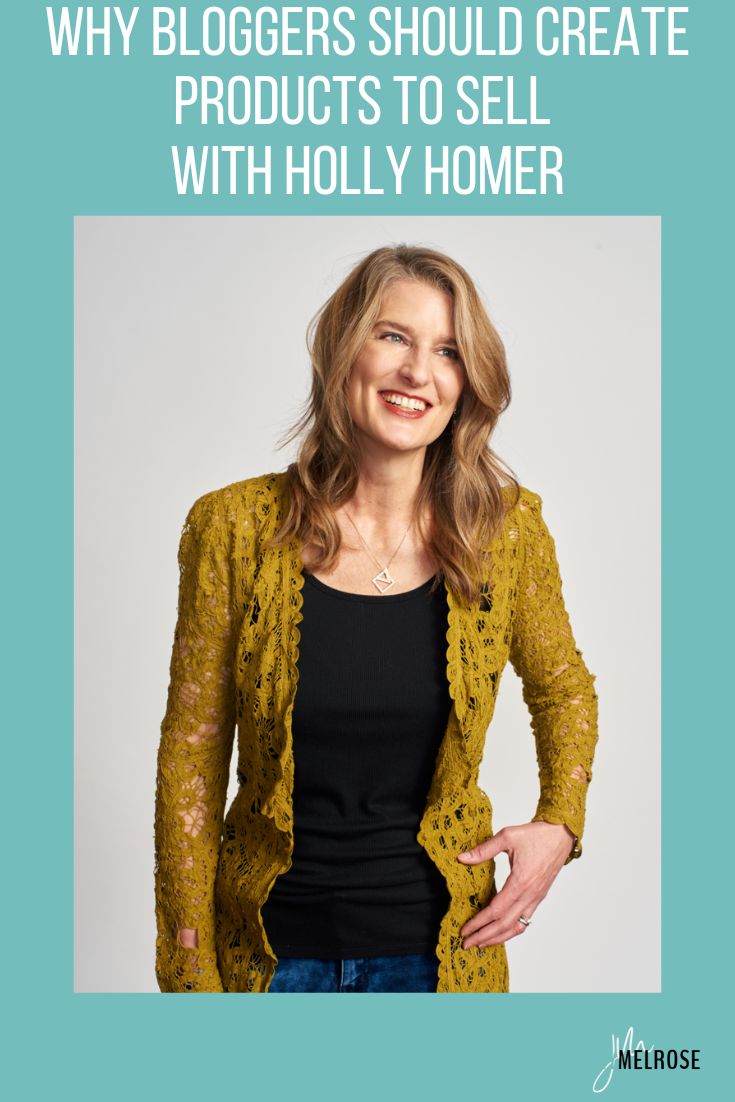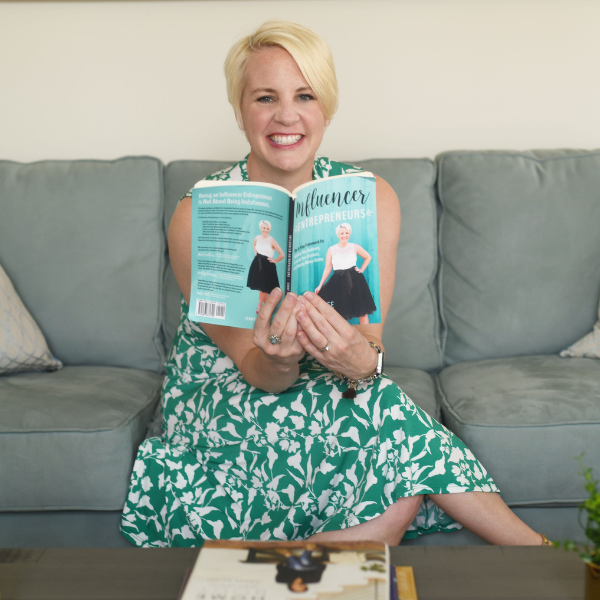Discover why creating and selling products can boost your blogging success in this insightful interview with Holly Homer. Learn strategies, benefits, and tips from an experienced blogger and entrepreneur.
IE 403: Why Bloggers Should Create Products to Sell with Holly Homer

Holly Homer started a blog “by accident” and it eventually evolved into Kids Activities Blog; fun things to do with your kids and resources for parents.
She typically captures her audience when they do an internet search for something like “things to do with your two-year-old.” She has activities for kids up through school age and offers homeschool resources too. She highlights traditional play, things you don’t have to spend money on, ideas to make memories, and more.
Holly has been blogging for over 20 years, supports her entire family with her blog, and has dealt with all the things that bloggers struggle with – updates to algorithms, changes to Google, etc.
Holly thinks that bloggers are pioneers. Blogging in the future will not look like what it does today as things are always changing. She recommends multiple streams of income. For that reason, she started a new product that solved a problem for her and now offers it to others.
Pagewheel helps you create and gives you all the tools to promote a digital product online. It starts in the beginning with an opt-in to potentially grow an email list and walks people through having a product to sell and gaining customers along a funnel.
What inspired you to transition from blogging to creating and selling products?
Holly realized that she needed to have more people on her email list. She had been going to conferences and buying courses about creating an email list and selling through it. None of the ideas she was getting through the courses and conferences were working for her.
She finds that the “expert advice” for other fields generally doesn’t apply to bloggers because the people making money off their email list are generally selling a product. A blogger is trying to get traffic to their blog and supplement it with other money-making things.
Bloggers cannot just write an email with one call to action. When you have a list, you pay for an email service so you need to cover the cost.
Holly began to investigate funnel building and selling things online. When she realized that she had tens of thousands on her list and was frustrated about paying for them without making a profit, she knew she had to make a change.
As a blogger, she realized her goals were different from other businesses. For example, the goal of her Facebook and Pinterest pages wasn’t engagement, it was getting traffic to her blog because she was monetizing.
She applied that same concept to her email list – driving traffic back to her blog. Otherwise, her email list is worthless unless she is selling a product.
Her mind shifted to seeing her email list as an asset. Today, her top source of traffic to her website is her email list. She decides where to send her subscribers. If she writes a new blog post, she puts it in her email.
She strategically thinks about how she can serve her audience better to extend beyond just blog posts. What low-cost products, simple guides, and other products can she create?
It starts with one opt-in and then you add accessory products that will go along with those things.
How do you believe creating and selling products enhances the blogging experience for both the creator and the audience?
A lot of people get stuck trying to figure out how their product is going to benefit their audience when they are trying to drive traffic to their website. If you are not making money on your blog, it is unsustainable.
There is no way to create and maintain this resource of amazing free things if you are not making money and able to support your family. Otherwise, your blog will shut down because it is just a very expensive and time-consuming hobby.
When you can see what your audience wants, see the stats of where they are trafficking, what resources are most valuable to them, and what conversations you want to have together, you can get the perspective of what your community’s needs are.
The internet is full of people who lie to you and take your money. You can be a trusted resource and share with your audience the things they need, just like you share things with your friends. Friends have your best interest in mind and know what you need to recommend things.
You don’t have to use sales language because they are looking for things that solve their problems. You have resources that you trust, both in business and personally, that can help others. No one is offended because you recommend things.
If it is your product and people don’t like it, you can refund their purchase. Recommendations benefit both you and your audience. You are solving a problem and your audience wants your solution.
Your mindset needs to be that you are solving basic-level problems with your resources and content.
But you cannot fully solve something in a 1000 – 1500-word blog post. You have to go into more depth with a guide, printable, course, workbook, or workshop.
When you create that content, it is a solution. The money they pay for your solution is their accountability. They don’t always utilize things that they get for free.
You need to stop feeling guilty and be able to confidently stand behind the things you offer.
If you think your audience is just a “freebie” audience and won’t spend money, you need to realize that they are spending money on Amazon, at the grocery store, on clothes, and other things for themselves.
By believing you have a “freebie” audience, you have cut yourself out of those transactions and disadvantaged your reader. You know and would prefer to spend money on the things you recommend.
Your audience would be mad to find out you didn’t share the good things you know. When you are solving a problem, it is a service.
What are the advantages of creating and selling products compared to relying solely on advertising or sponsored content for monetization?
When you have your own product or your affiliating products, you have control over it. While you might have parameters around the affiliate products, you still create your own content, put your own voice on it, and tell the truth without answering anyone’s legal department.
It is better for your authenticity online and for your audience to know what you really think. If you put out a crappy product that you continually have to refund, you can stop selling it. When you work for someone else, you do not have the adaptability to do those things.
There is one sure thing about the internet. Over time, traffic will decrease. It will be a roller coaster and have some bumps in the road. The new social media does not want you to include links and take people off of their platform.
Over time, we know we will have less traffic so we have to think about more ways to create income per visitor. Then, you will not be reliant on page views. If you are serving your community in a way that they are willing to pay for it, it is a win-win situation.
When you can control traffic with your email list that you are growing with an opt-in, to sell that product, you can send out an email to your list offering that product.
If you need a resurgence, if you see that something is trending, if something is seasonal (like summer or back-to-school) and a good fit, you can put it in front of your audience and utilize your list.
The conversion rate to take action is so much higher when it comes to your email list.
You can see the tendencies and what they are doing. When you are looking at it, monetizing cannot stick to the traditional resources that you use. You can still continue to use them but you have to have your own product or services that allows you to have income coming in and is totally controlled by you and your list.
When you are scrolling and see something, sometimes you forget about it. You have to see things over and over or see them presented differently so that we understand the breadth and width of what that might solve.
When you put something into your email list, it isn’t just a “one and done.” You are able to highlight specifics about the product.
The person who might be perfect for your product might just fly by it the first three or four times. The next time you present it, it might be exactly what they need at that time. They say you need to see something eight or nine times before you take action on it.
How many of us are in a position where algorithms show your potential client the product eight or nine times? The only way to do it is to get it continually in front of them via email.
How do you determine what types of products are best suited to your blogging niche and audience?
This is super easy and we are overthinking this. The person who has a problem you can solve is your best customer.
You don’t have to do brain surgery on them. They will pay for a simple upgrade to their life, a simple implementation that will change the way they do something, increase the quality of their life, or do something more efficiently, they will pay you for it.
If you can improve any of the things in their life just a little bit, then people are willing to pay. The challenge is in how you communicate that you solve the problem.
You only need to solve one problem and then tell people what you are solving. Connect it to the content you are already creating.
What specific questions are people asking Google? How do I teach my children to get their chores done? What is an activity I can do in five minutes? You then connect them to your product.
We overthink it and believe we have to have something big or that it all needs to flow together. In reality, we need to give our customers time and efficiency to be able to get things done, especially when your client is a busy person.
Ten years ago, people were trying to figure out where to find this information. Now, we have so much information.
It is less about knowing how to do it and more about teaching the information you know or the shortcuts to get your result. You cut out the noise and solve the problem quickly.
Whatever you are selling is probably available on YouTube for the customer to buy. You are giving them the shortcut and together, solve a problem.
Can you provide tips or advice for bloggers who are interested in exploring product creation as a way to monetize their platform?
Start with looking at the top search terms on the blog.
- What problems are people searching for?
- What are you already solving for people?
- Are you solving the whole problem or just giving them an overview?
- How can you fit an implementation into a paid product?
For example, if you have a playdough tutorial on your website, you want to put your favorite paid playdough on Amazon and a link. People may think they have all the time in the world to make it but then give up and buy it. It isn’t always about starting from scratch on something.
You are showing people how to do it and giving them a paid option or holding their hand through it. You want to give them very simple things that are easy to implement and they feel are worth the money you charge.
Pagewheel Access
The link gives you free access to see how Pagewheel works. You can make something using over 350 batch templates. You can use the AI feature to create things with AI.
Once you have created the product, Pagewheel automatically creates a sales page, a delivery page, the delivery mechanism, and an email that sends out with the product. You can connect your list.
It is a complete process that helps you get it all done much quicker by collaborating with AI. You can have all the pieces for a funnel from starting your opt-in to selling your product.
Action Steps:
- If you liked this episode of Influencer Entrepreneurs, please subscribe and leave a fabulous review!
- Join the conversation on Instagram by tagging Jenny when you’re listening to the podcast. She’ll send you a personal message whenever you tag her.


